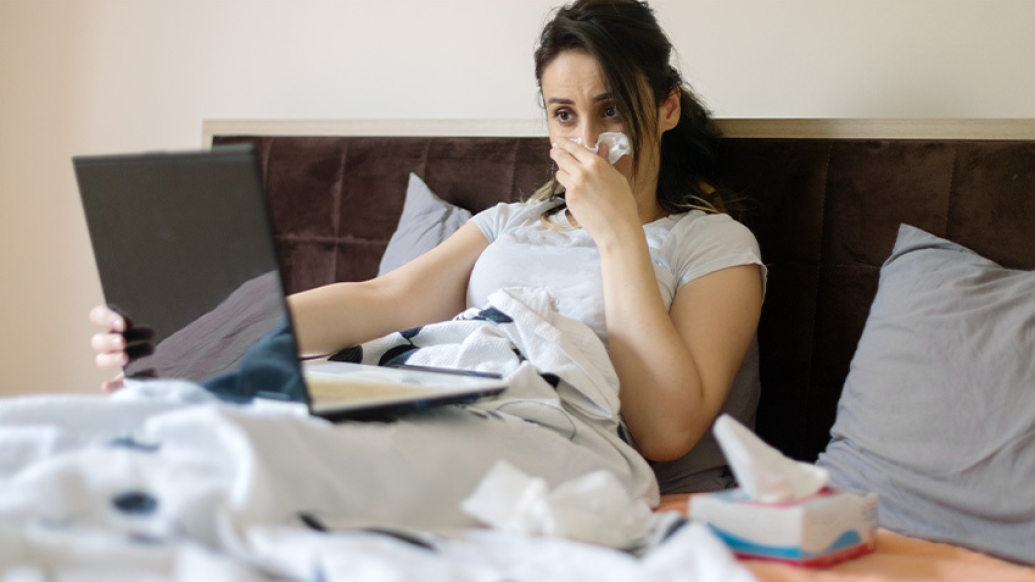Pre-COVID data on upper respiratory infection care shows direct-to-consumer telehealth visits more likely to lead to additional visits.
7:53 AM
Author |

Even before the pandemic made telehealth a hot topic, people with minor urgent health needs had started to turn to companies that offer on-demand video chats with physicians that they don't normally see.
Insurers and employers even started buying access to this direct-to-consumer form of virtual care, hoping it might reduce in-person care, including emergency department visits.
But a new University of Michigan study casts some doubt on whether that will actually happen.
Published in the April issue of Health Affairs, the study finds that patients who had an on-demand virtual care visit for an upper respiratory infection in the three years before the pandemic began were slightly more likely to receive additional follow-up care than similar patients who had their first visit in person.
The study compared data from more than 28,700 virtual visits with data from more than 57,400 in-person visits for acute respiratory infections in 2016 through 2019. Those visits, and any follow-up care, were all covered by a large insurer. All the virtual visits were done through a direct-to-consumer telehealth company that the insurer had partnered with.
The authors say it's important to note that the vast majority of the patients did not require any further care for their infections, which included ear infections, bronchitis, laryngitis, sore throat and pneumonia.
But 10.3% of the patients first seen through a direct-to-consumer telehealth visit ended up having an in-person visit in the next week, compared with 5.9% of those who had their first visit in person. This includes second telemedicine visits or visits to clinics, urgent care centers and emergency rooms.
Less than 1% of all the patients in the study visited an emergency department after their initial visit, and the percentage was only slightly lower among people whose first visit was through a direct-to-consumer virtual provider compared with those who started with an in-person visit.
Kathleen Li, M.D., M.S., is the first author of the paper and an alumna of the IHPI Scholars program at the U-M Institute for Healthcare Policy and Innovation, and conducted the study as part of the institute's telehealth research effort.
She notes that direct-to-consumer telehealth providers usually don't have access to patients' electronic health records, so they may not know the patient's full medical history or underlying conditions.
As an emergency physician at Michigan Medicine, Li notes that often patients will come to the ED after trying to reach their primary care physician and not being able to get an appointment quickly.
As more companies enter the marketplace of direct-to-consumer telehealth, it's going to be important to understand the outcomes for patients, and the broader implications for the health care system.Chad Ellimoottil, M.D., M.Sc.
Li was a co-author on a recent National Poll on Healthy Aging report from IHPI that found that 1 in 8 older adults had gone to the ED after not being able to get a timely appointment with their regular provider.
"If an appointment with a patient's regular provider isn't available right away, or the patient isn't able to get to the clinic in person during standard business hours, on-demand virtual care does offer convenience," she says. "But things have changed so much with the pandemic, and more primary care providers are now offering telehealth visits with themselves or members of their teams. It remains to be seen how primary care-based telehealth models will affect downstream use and cost of care."
Senior author Chad Ellimoottil, M.D., M.S., who directs IHPI's Telehealth Research Incubator, says that while the insurance claims data in the study were available to the IHPI team, that may not be the case for most direct-to-consumer telehealth, especially if the patient pays directly rather than using insurance.
"As more companies enter the marketplace of direct-to-consumer telehealth, it's going to be important to understand the outcomes for patients, and the broader implications for the health care system," says Ellimoottil, a urologist and telehealth researcher. "Data transparency is essential. We need to be able to directly compare outcomes of patients seen by direct-to-consumer telehealth companies with in-person care and with telemedicine provided by the patient's own primary care provider."
For employers that offer a direct-to-consumer telehealth option through their benefits package, Li says, the bottom line comes down to balancing how much the instant access may result in an increase in visits or additional follow-up care, against the benefit of less time spent away from work and a potential reduction in inappropriate emergency department visits.
"We need to optimize both the use of telehealth and of in-person emergency care," she says.
In addition to Li and Ellimoottil, the study was done by Ziwei Zhu of the Department of Urology and Sophia Ng of IHPI.
The research was sponsored by the National Institutes of Health ((HL29974), which supports Li through the Mount Sinai Clinician Scientist Training Program in Emergency Care Research at the Icahn School of Medicine at Mount Sinai in New York. Ellimoottil receives funding from the Agency for Healthcare Research and Quality (HS027632)
Paper cited: "Direct-To-Consumer Telemedicine Visits For Acute Respiratory Infections Linked To More Downstream Visits," Health Affairs. DOI: 10.1377/hlthaff.2020.01741

Explore a variety of healthcare news & stories by visiting the Health Lab home page for more articles.

Department of Communication at Michigan Medicine
Want top health & research news weekly? Sign up for Health Lab’s newsletters today!





